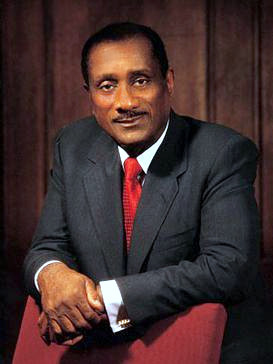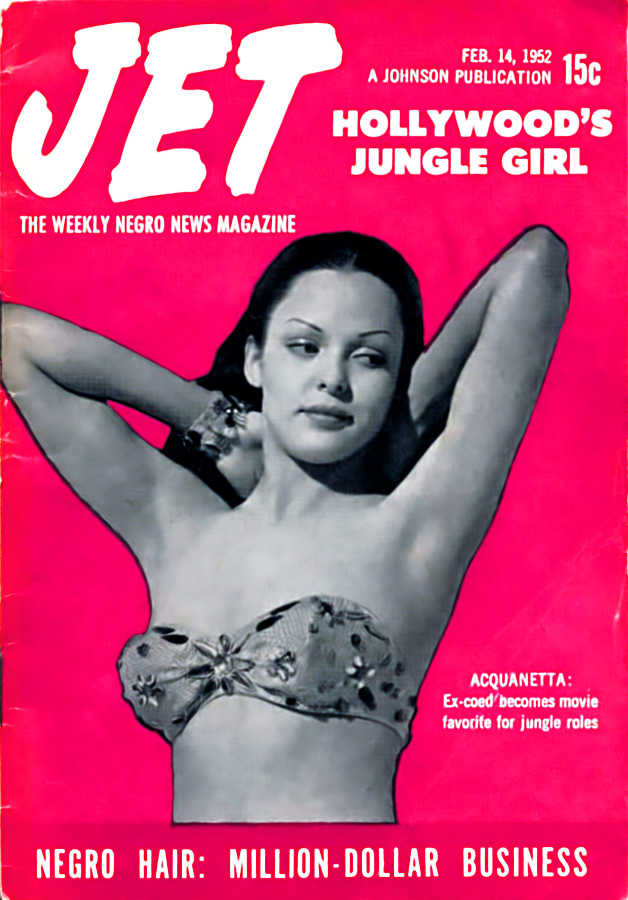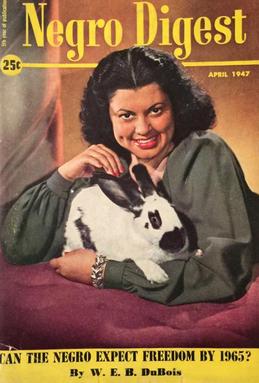By Lady Houston

FROM WIKIPEDIA COMMONS
John Harold Johnson (January 19, 1918 – August 8, 2005) was an American businessman and publisher. Johnson was the founder in 1942 of the Johnson Publishing Company, headquartered in Chicago, Illinois. Johnson’s company, with its Ebony (1945) and Jet (1951) magazines, was among the most influential African-American business in media in the second half of the twentieth century. In 1982, Johnson became the first African American to appear on the Forbes 400. In 1987, Johnson was named Black Enterprise Entrepreneur of the year. in 1996, he was awarded the Presidential Medal of Freedom.

EBONY AND JET MAGAZINES
Although Negro Digest achieved some success and at its height had a circulation of more than 100,000, it was dwarfed by Johnson’s subsequent publication, Ebony, which was so popular that its initial run of 25,000 copies easily sold out. The articles in Ebony, which were designed to look like those in Life or Look magazines, emphasized the achievements of successful African Americans. Photo essays about current events and articles about race relations were also included in the magazine. Initially focused on the rich and famous in the African-American community, Johnson expanded the reporting to include issues such as “the white problem in America”, African-American militancy, crimes by African Americans against African Americans, civil rights legislation, Freedom Rides and marches, and other aspects of segregation and discrimination. Professional historians were recruited for the magazine’s staff so that the contributions of African Americans to the history of the United States could be adequately documented. African-American models were used in the magazine’s advertisements and a conscious effort was made to portray positive aspects of African-American life and culture. Everything in the magazine was addressed to the African-American consumer. Johnson maintained that Ebony′s success was due to the positive image of African Americans that it offered.
In 1951, Johnson launched Tan, a “true confessions”-type magazine. In 1951, Jet, a weekly news digest, began. Later publications included African American Stars and Ebony Jr., a children’s magazine. Although all of the magazines achieved a measure of success, none was able to compete with Ebony, which in its 40th year of publication had a circulation of 2,300,000 and was the primary reason that Johnson was considered one of the 400 richest individuals in the United States. One of Johnson’s most notable issues of Jet was the September 15, 1955 issue in which he published a picture of a Chicago–youth Emmett Till‘s mutilated body after it had arrived in Chicago from Mississippi. People considered Johnson’s decision to publish Till’s photograph his greatest moment. Michigan congressman Charles Diggs recalled that given the emotion the image stimulated, it was “probably one of the greatest media products in the last 40 or 50 years”.

NEGRO DIGEST
Once the idea of Negro Digest occurred to him, it began to seem like a “black gold mine”, Johnson stated in his autobiography Succeeding against the Odds. He remained enthusiastic even though he was discouraged on all sides from doing so. Only his mother, a woman with biblical faith and deep religious convictions, as well as a powerful belief in her son, supported his vision and allowed him to use her furniture as collateral for a $500 loan. He used this loan to publish the first edition of Negro Digest in 1942. Johnson had a problem with distribution until he teamed up with Joseph Levy, a magazine distributor who was impressed with him. Levy provided valuable marketing tips and opened the doors that allowed the new digest to reach newsstands in other urban centers. Within six months circulation had reached 50,000. This publication covered African-American history, literature, arts, and cultural issues. After several decades of publication its name was changed to Black World.

OTHER VENTURES
In addition, Johnson Publishing owned Fashion Fair Cosmetics (the world’s number one makeup and skin care company for women of color), and Supreme Beauty products (hair care for men and women), and was involved in television production and produced the Ebony Fashion Fair (the world’s largest traveling fashion show), which has donated over $47 million to charity. The show visited more than 200 cities in the United States, Canada and the Caribbean. Johnson Publishing also has a book division which employed more than 2,600 people, with sales of over $388 million. Johnson purchased three radio stations, started a book publishing company, and a television production company, and served on the board of directors of several major businesses, including the Greyhound Corporation. In 2019, the remaining assets of Johnson Publishing Company were sold as part of a Chapter 7 bankruptcy proceeding.
